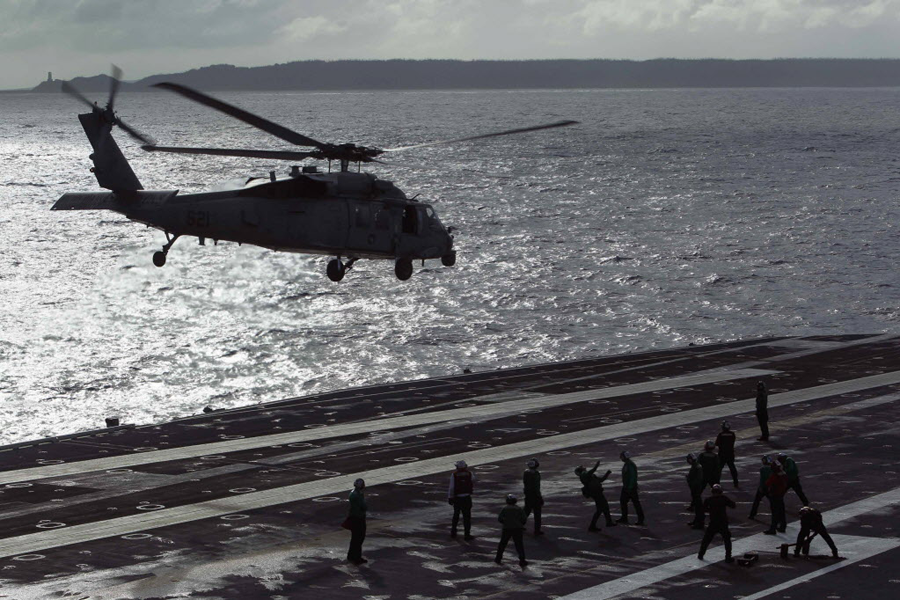USS George Washington: warship turned floating aid hub serves 18,000 meals daily
Loading...
| OFF THE COAST OF EASTERN SAMAR, The Philippines
The crew of the USS George Washington cut their shore leave short in Hong Kong to steam towards the Philippines when the extent of the damage wreaked by Typhoon Haiyan became clear.
Since the ship arrived at the island last week, the aircraft carrier’s crew of 5,000 – residents of a decent-sized town as tall as a 24-story building – have been supporting relief operations here.
The ship is powered by two nuclear reactors, which means that it can steam for 20 years before it needs to refuel. When it’s under way, the crew serves up 18,000-plus meals a day.
Pilots flying the Seahawk helicopters here estimate that they are doing two to three times the amount of flying that they normally would as they ferry supplies and casualties around the hardest-hit islands here.
Throughout the day, the carrier group’s aircraft come and go on a flight deck the length of three football fields.
Before it embarked, the crew flew some of its airplanes off the ship to make room for more helicopters, which are better suited than planes for this kind of relief effort.
Then they streamlined the aircraft. Some of the Seahawks are normally used for antisubmarine warfare, but the crew removed the helicopters’ sonar to make more space for supplies and for rescuing people.
It was space desperately needed in the early days of the relief effort, when Lt. Justin Pickworth, a Seahawk pilot, recalls encountering a tiny island half the size of his aircraft carrier deck his first day flying off the coast of eastern Samar. Nearly 300 people were desperate for food and water, and some needed evacuation.
Unable to land, his crew used hoists to pull people up into the safety of the helicopter. They lowered jugs of water and food the same way.
Now the relief effort has grown and expanded, with air traffic around the island so crowded that E-2C Hawkeyes – which look like planes with satellite dishes on their backs – orbit overhead to help deconflict air traffic.
The next stage of the mission is to resupply some of the smaller islands, says Rear Adm. Mark Montgomery, who commands the US 7th Fleet, which includes the USS George Washington.
At the same time, more 7th Fleet ships moved into the region this week, bringing with them bulldozers, backhoes, and dump trucks.
“You want to use the ground for supplies as much as possible,” Montgomery says, since big trucks have more capacity than, say, helicopters.
All of this cooperation stands in sharp contrast to the days of the Philippine-American war of 1899, when the Samar insurgency was so fierce that surviving US Marines were lauded by their comrades for the rest of their careers.
Upon their entry into a mess hall, fellow troops would salute them with the toast, “Stand, Gentlemen. He served on Samar!” says Brian Linn, a historian at Texas A&M University in College Station, Texas.
Decades later, the US Navy fought and won some of its fiercest battles of World War II in these waters. “This area,” notes Montgomery, “means a lot to the US Navy.”







